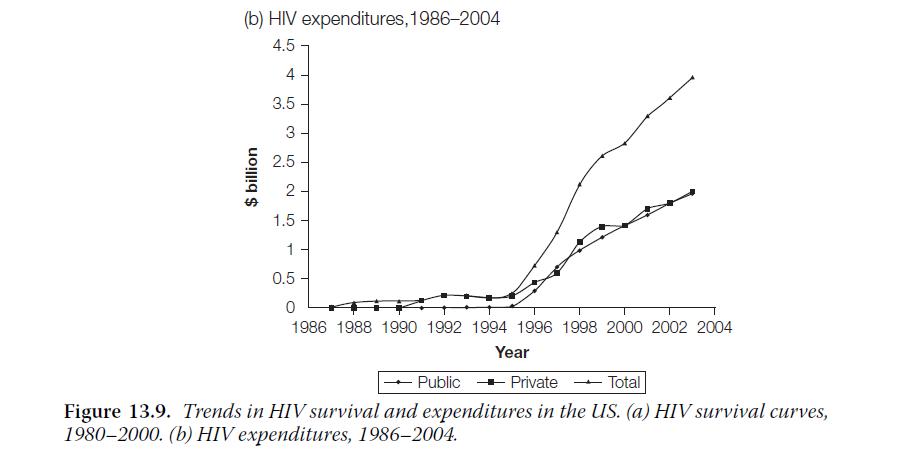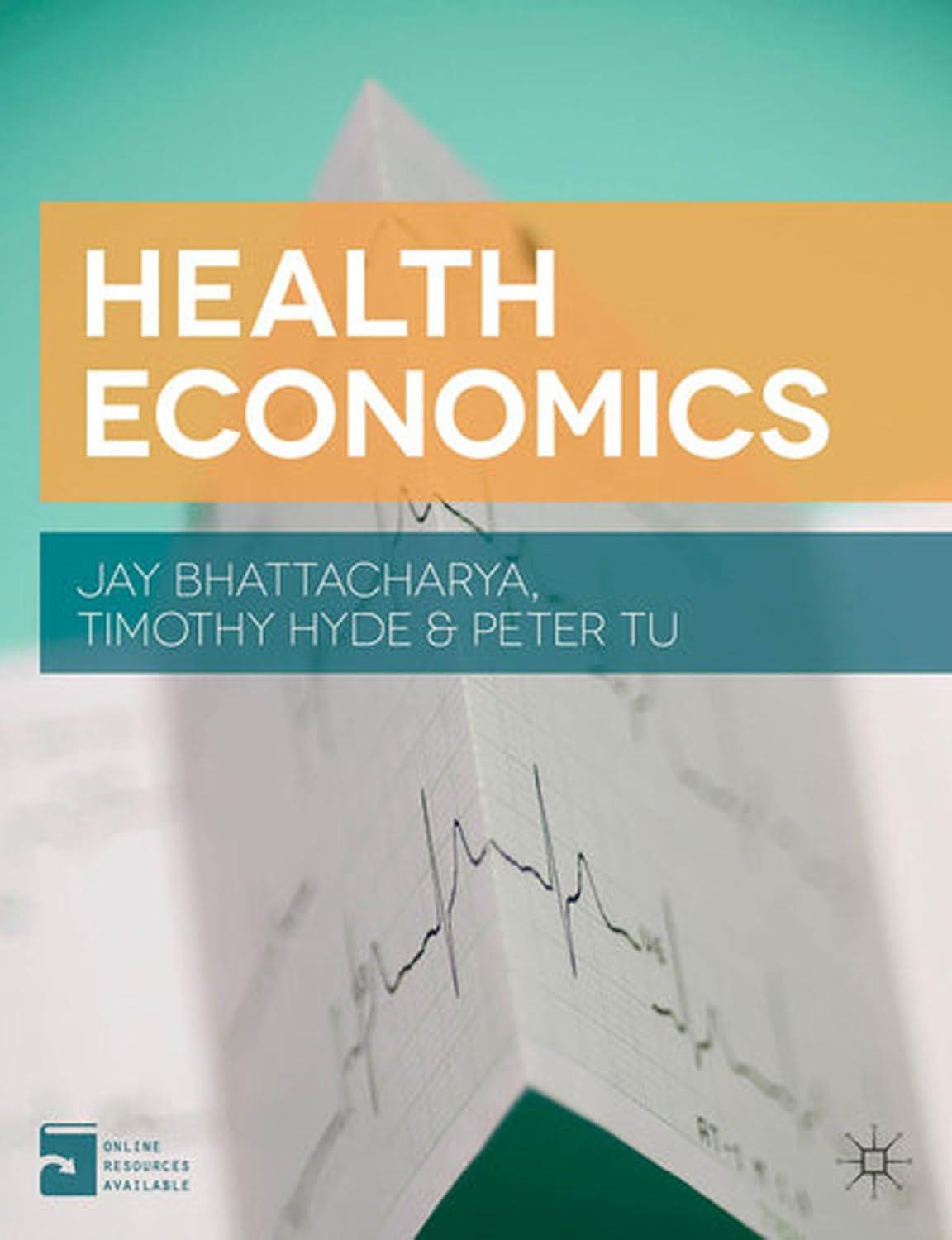In a journal article, Philipson and Jena (2006) study HIV survival and expenditures. Figure 13.9 shows trends
Question:
In a journal article, Philipson and Jena (2006) study HIV survival and expenditures. Figure 13.9 shows trends in HIV survival and HIV expenditures in the US.
a. Figure 13.9 (a) shows that HIV survival after diagnosis improved dramatically over a twenty-year period. Propose three explanations for this fact, one involving pharmaceutical innovation, one involving improved HIV screening, and one involving demographic changes in the at-risk population. It is okay if these explanations do not reflect actual historical developments, but they should explain why survival after diagnosis might be improving over time.
b. Suppose now that these curves have been adjusted for screening and demographics, and that the survival improvement is entirely a reflection of technological change (such as the introduction of HAART, an effective AIDS drug that boosts immune function, in 1994). Explain why we do not have enough information in Figure 13.9 (a) to determine if the improvements in HIV longevity were cost-effective.
c. Figure 13.9 (b) shows that expenditures on HIV treatment rose rapidly during approximately the same period. Is this evidence that the price of HAART was

increasing during this time? Is it evidence that the cost of survival was increasing during this time?
d. Suppose Philipson and Jena analyze the numbers and find that the survival improvements depicted in Figure 13.9 (a) are outweighed by the increased expenditures depicted in Figure 13.9(b). Assume that AIDS patients are well informed about the costs and benefits of the new technologies. Why would they overspend on HIV treatments that are not worth it?
e. In actuality, the researchers found that the technology improvements during this period such as HAART were massively beneficial to HIV patients, and that the survival gains far outweighed the increased cost of treatment. How do you square this statement with the fact that the price of treating HIV was increasing steadily over this period?
Step by Step Answer:






